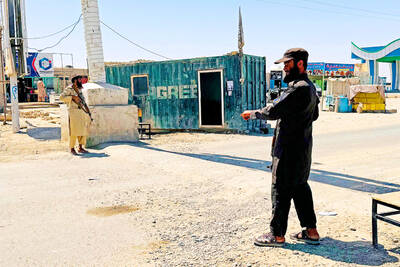Half the world's population will live in urban areas by the end of this year and about 70 percent will be city dwellers by 2050, with cities and towns in Asia and Africa registering the biggest growth, according to new UN projections released on Tuesday.
The report predicts that there will be 27 "megacities" with at least 10 million population by mid-century compared to 19 today, but it forecasts that at least half the urban growth will be in the many smaller cities with less than 500,000 people.
According to the latest UN estimate last year, world population is expected to increase from 6.7 billion last year to 9.2 billion in 2050. During the same time period, the new report said, the population living in urban areas is projected to rise from 3.3 billion to 6.4 billion.
"Thus, the urban areas of the world are expected to absorb all the population growth expected over the next four decades while at the same time drawing in some of the rural population," the report said. "As a result, the world rural population is projected to start decreasing in about a decade, and 600 million fewer rural inhabitants are expected in 2050 than today."
The report stresses that these projections will take place only if the number of children in families in the developing world continues to decline, especially in Africa and Asia.
At a news conference launching the 2007 Revision of World Urbanization Prospects, Hania Zlotnik, head of the UN Population Division, expressed hope that increasing urbanization "will go hand in hand with economic growth."
She said more than 70 percent of the population in Europe, North America, and many other richer developed countries already live in urban areas.
But only 39 percent of Africans and 41 percent of Asians lived in urban areas last year -- and these regions and other less developed countries are going to experience the most population growth in their cities and towns in the coming decades, the report said.
"During 2008, for the first time in history, the proportion of the population living in urban areas will reach 50 percent," it said.
"Globally, the level of urbanization is expected to rise from 50 percent in 2008 to 70 percent in 2050," the report said.
By mid-century, Asia is projected to see its urban population increase by 1.8 billion, Africa by 900 million, and Latin America and the Caribbean by 200 million, it said.
"While in the more developed regions, the proportion urban was already nearly 53 percent in 1950, in the less developed regions the 50 percent level will likely be reached around 2019," the report said.
Zlotnik said the UN expects Africa to reach the 50 percent mark between 2045 and 2050.
"Asia, if it continues to urbanize as rapidly as it's doing now, especially because of the rapid urbanized in China, is expected to become 50 percent urbanized around 2020-2025," she said.

‘EYE FOR AN EYE’: Two of the men were shot by a male relative of the victims, whose families turned down the opportunity to offer them amnesty, the Supreme Court said Four men were yesterday publicly executed in Afghanistan, the Supreme Court said, the highest number of executions to be carried out in one day since the Taliban’s return to power. The executions in three separate provinces brought to 10 the number of men publicly put to death since 2021, according to an Agence France-Presse tally. Public executions were common during the Taliban’s first rule from 1996 to 2001, with most of them carried out publicly in sports stadiums. Two men were shot around six or seven times by a male relative of the victims in front of spectators in Qala-i-Naw, the center

Incumbent Ecuadoran President Daniel Noboa on Sunday claimed a runaway victory in the nation’s presidential election, after voters endorsed the young leader’s “iron fist” approach to rampant cartel violence. With more than 90 percent of the votes counted, the National Election Council said Noboa had an unassailable 12-point lead over his leftist rival Luisa Gonzalez. Official results showed Noboa with 56 percent of the vote, against Gonzalez’s 44 percent — a far bigger winning margin than expected after a virtual tie in the first round. Speaking to jubilant supporters in his hometown of Olon, the 37-year-old president claimed a “historic victory.” “A huge hug

Two Belgian teenagers on Tuesday were charged with wildlife piracy after they were found with thousands of ants packed in test tubes in what Kenyan authorities said was part of a trend in trafficking smaller and lesser-known species. Lornoy David and Seppe Lodewijckx, two 19-year-olds who were arrested on April 5 with 5,000 ants at a guest house, appeared distraught during their appearance before a magistrate in Nairobi and were comforted in the courtroom by relatives. They told the magistrate that they were collecting the ants for fun and did not know that it was illegal. In a separate criminal case, Kenyan Dennis

The US will help bolster the Philippines’ arsenal and step up joint military exercises, Manila’s defense chief said, as tensions between Washington and China escalate. The longtime US ally is expecting a sustained US$500 million in annual defense funding from Washington through 2029 to boost its military capabilities and deter China’s “aggression” in the region, Philippine Secretary of Defense Gilberto Teodoro said in an interview in Manila on Thursday. “It is a no-brainer for anybody, because of the aggressive behavior of China,” Teodoro said on close military ties with the US under President Donald Trump. “The efforts for deterrence, for joint resilience